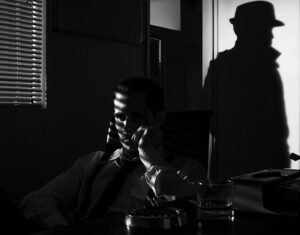Introduction: In today’s technologically advanced world, ensuring the confidentiality of sensitive information is of paramount importance. Unfortunately, the risk of eavesdropping and unauthorized surveillance has grown significantly. To safeguard your privacy, bug sweeps have become an indispensable tool. These meticulous and comprehensive procedures aim to detect and neutralize electronic surveillance devices, ensuring that your personal and professional spaces remain secure from prying eyes. Join us as we explore the significance of bug sweeps, their methodologies, and their role in creating a protected environment.
What are Bug Sweeps? Bug sweeps, also known as electronic counter-surveillance sweeps or Technical Surveillance Countermeasures (TSCM), are proactive measures designed to identify and remove covert eavesdropping devices, hidden cameras, and tracking systems. These devices can be strategically placed to intercept confidential conversations or compromise your privacy without your knowledge.
The Importance of Bug Sweeps: Bug sweeps are essential for several reasons:
- Privacy Protection: Bug sweeps offer peace of mind by ensuring that your personal spaces, such as homes, offices, and meeting rooms, are free from potential surveillance threats.
- Preventing Information Leakage: Businesses and organizations can prevent sensitive information from falling into the wrong hands, safeguarding their competitive advantage and client data.
- Maintaining Confidentiality: Legal firms, government agencies, and high-profile individuals can ensure that their confidential discussions remain private and protected from unauthorized access.
The Bug Sweep Process: Bug sweeps involve meticulous steps to detect and eliminate electronic surveillance:
- Physical Inspection: A skilled TSCM team conducts a physical inspection of the premises to search for hidden surveillance devices.
- Electronic Sweep: Advanced electronic equipment is used to detect radio frequencies, infrared signals, and other electronic transmissions.
- Signal Analysis: Suspicious signals are analyzed to determine their origin and potential threat level.
- Device Identification: Covert surveillance devices, such as hidden cameras, microphones, or GPS trackers, are identified and located.
- Device Removal: Once identified, the TSCM team removes and neutralizes the detected surveillance devices.
Challenges and Professional Expertise: Bug sweeps require expert knowledge and specialized equipment:
- Sophisticated Devices: Covert surveillance devices are often designed to be difficult to detect using conventional methods, necessitating professional expertise.
- TSCM Training: Conducting successful bug sweeps demands in-depth training and experience in counter-surveillance techniques.
Conclusion: In a world where privacy is increasingly under threat, bug sweeps provide a much-needed defense against electronic surveillance and potential privacy breaches. By availing of bug sweep services, individuals, businesses, and organizations can safeguard their confidential information, protect their interests, and preserve their right to privacy. Let us embrace the role of bug sweeps in securing our personal and professional spaces, empowering us to navigate the digital landscape with confidence and peace of mind.



